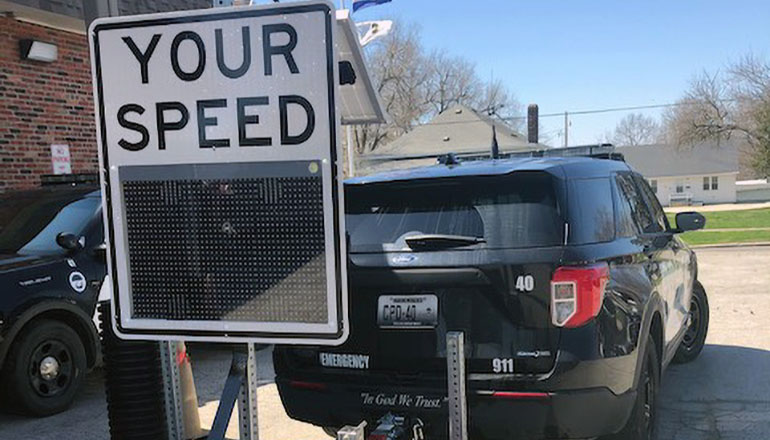The Chillicothe Police Department has acquired new tools as part of a community safety initiative that started last year after receiving the law enforcement tax. Police Chief Jon Maples reports the department now has the LexisNexis Community Crime Map and four radar speed display trailers.
The Community Crime Map connects law enforcement with the community to help reduce crime and improve public safety. Maples explains crime mapping helps the public get a better idea of crime activity, so residents can make more informed decisions about how to stay safe. It also helps law enforcement with analyzing and problem solving crime as well as analyzing staffing issues and time frames.
The map automatically alerts the public about recent crime activity and helps improve communication between the public and law enforcement through anonymous tips. The crime map can be accessed at chillicothecity.org/police-department or communitycrimemap.com.
Maples says the four radar speed display trailers will be “a great tool” and provide active visual feedback to motorists. They will assist the Chillicothe Police with speeding violations and enable them to collect traffic data. He notes the trailers will be placed in problematic areas, collect data, and focus patrol units in those areas.
Radar speed signs aid in controlling traffic speed. They are additional LED-lit signs that sit just below the static speed limit sign. They are capable of recording the speed of an oncoming vehicle and displaying it through the lights. Maples says there are multiple benefits to using a radar speed sign.
There are many benefits to using a Radar Speed Sign, such as:
- Survey and reports from different sources and highway authorities have indicated that drivers can capture and process information shown by the LED more easily and effectively as opposed to the conventional ways of showing speed limits.
- A bit more complex type of benefit is a combination of flexibility and ease. Since they are small in size (some can fit in the trunk of a car), they’re easy to carry and it takes only a short time to deploy them at a convenient place. It is easy to transport to any place needed by the law enforcement officers and then they can readily deploy and record data for the passing vehicles and then use that data to make a point about speeding problems with the latest updated information.
- The above mentioned point helps to gather data for research and higher level decision making and some basic statistical data for finding trends.
- Many times the drivers will mistakenly over speed and then receive tickets from the officers. With radar speed signs, sometimes over speeding drivers are given a chance to correct their speed, and it has been seen that by the time they reach the second speed radar sign, their speed is taken below the limit. This results in happier drivers and safer roads.
- Radar Speed Signs reduce the need for humps and bumps for slowing down a vehicle. In emergency situations, ambulances, fire service, police vehicles and other first responders need to rush to the scene immediately and humps can slow them down. Every second matters in those moments.
- They reduce the need for manpower. With speed guns and radar signs in place, most drivers comply, even if they mistakenly speed up, they reduce their speed earlier and avoid tickets. A traffic officer doesn’t need to keep standing or chase down a speeding vehicle every now and then. That officer can apply his time to a more serious task.







